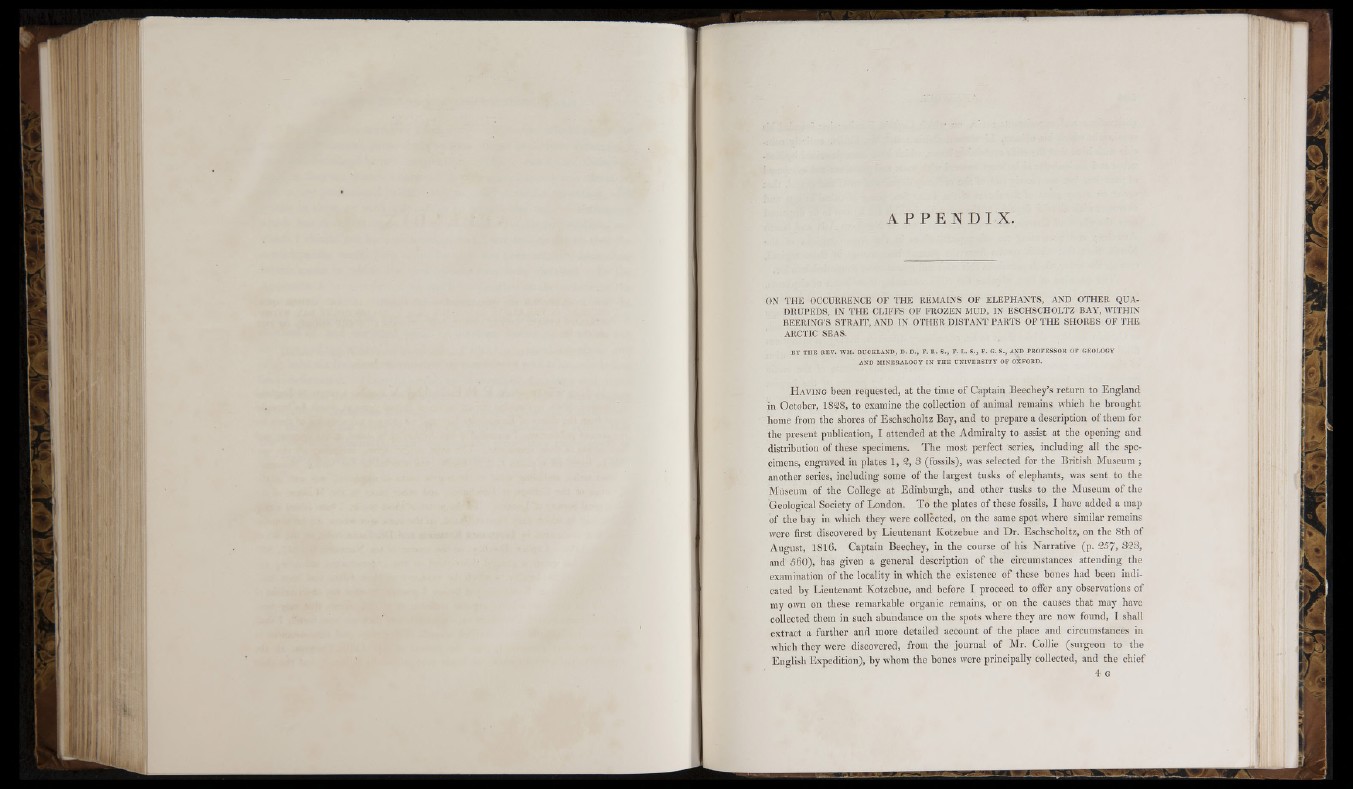
A P P E N D I X .
'Ill'
ON THE OCCURRENCE OF THE REMAINS OF ELEPHANTS, AND OTHER QUADRUPEDS,
IN THE CLIFFS OF FROZEN MUD, IN ESCHSCHOLTZ BAY, WITHIN
BEERING’S STRAIT, AND IN OTHER DISTANT PARTS OF THE SHORES OF THE
ARCTIC SEAS.
BY THE BEV. WM. BUCKLAND, D. D., F. B. S ., F. L. S., F. G. S., AND PROFESSOB OF GEOLOGY
AND MINERALOGY IN THE UNIVERSITY OF OXFORD.
1
i
H a v i n g been requested, at the time of Captain Beechey’s return to England
in October, 1828, to examine the collection of animal remains which he brought
home from the shores of Eschscholtz Bay, and to prepare a description of them for
the present publication, I attended at the Admiralty to assist at the opening and
distribution of these specimens. The most perfect series, including all the specimens,
engraved in plates 1, 2, S (fossils), was selected for the British Museum ;
another series, including some of the largest tusks of elephants, was sent to the
Museum of the College at Edinburgh, and other tusks to the Museum of the
Geological Society of London. To the plates of these fossils, I have added a map
of the boy in which they were collected, on the same spot where simihar remains
were first discovered by Lieutenant Kotzebue and Ur. Eschscholtz, on the Sth of
August, 1816. Captain Beechey, iu the course of his Narrative (p. 257, 323,
and 560), has given a general description of the circumstances attending the
examination of the locality in which the existence of these bones had been indicated
by Lieutenant Kotzebue, and before I proceed to offer any observations of
my own on these remarkable organic remains, or on the causes that may have
collected them in such abundance on the spots where they are now found, I shall
extract a further and more detailed account of the place and circumstances in
which they were discovered, from the journal of Mr. Collie (surgeon to the
English Expedition), by whom the bones were principally collected, and the chief
4 G